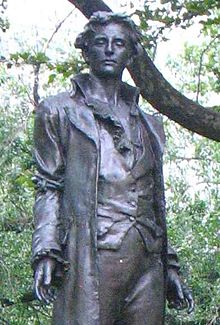
East Haddam is a town in Middlesex County, Connecticut, United States. The town is part of the Lower Connecticut River Valley Planning Region. The population was 8,875 at the time of the 2020 census.

Silas Deane was an American merchant, politician, and diplomat, and a supporter of American independence. Deane served as a delegate to the Continental Congress, where he signed the Continental Association, and then became the first foreign diplomat from the United States to France, where he helped negotiate the 1778 Treaty of Alliance that allied France with the United States during the American Revolutionary War.
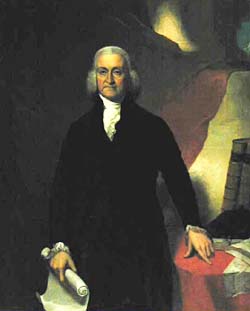
Jonathan Trumbull Sr. was an American politician and statesman who served as Governor of Connecticut during the American Revolution. Trumbull and Nicholas Cooke of Rhode Island were the only men to serve as governor of both a British colony and an American state, and he was the only governor to take up the Patriot cause at the start of the Revolutionary War. Trumbull College at Yale University, the town of Trumbull, Connecticut, Trumbull County, Ohio, and Jonathan the Husky are all named for him.

David Humphreys was an American Revolutionary War colonel and aide de camp to George Washington, a secretary and intelligence agent for Benjamin Franklin in Paris, American minister to Portugal and then to Spain, entrepreneur who brought Merino sheep to America, and member of the Connecticut state legislature. He also was a prolific poet and author and a member of the Hartford Wits. As secretary and speechwriter to George Washington during his administration, Humphreys was the nation's first U.S. presidential speechwriter.
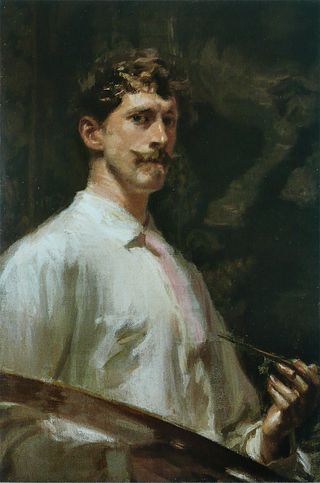
Frederick William MacMonnies was the best known expatriate American sculptor of the Beaux-Arts school, as successful and lauded in France as he was in the United States. He was also a highly accomplished painter and portraitist. He was born in Brooklyn Heights, Brooklyn, New York and died in New York City.

William Hull was an American soldier and politician. He fought in the American Revolutionary War and was appointed as Governor of Michigan Territory (1805–13), gaining large land cessions from several American Indian tribes under the Treaty of Detroit (1807). He is most widely remembered, however, as the general in the War of 1812 who surrendered Fort Detroit to the British on August 16, 1812 following the Siege of Detroit. After the battle, he was court-martialed, convicted, and sentenced to death, but he received a pardon from President James Madison and his reputation somewhat recovered.

Thomas W. Knowlton was an American patriot who served in the French and Indian War and was a colonel during the American Revolution. Knowlton is considered America's first Intelligence professional, and his unit, Knowlton's Rangers, gathered intelligence during the early Revolutionary War. Knowlton was killed in action at the Battle of Harlem Heights.

Benjamin Tallmadge was an American military officer, spymaster, and politician. He is best known for his service as an officer in the Continental Army during the American Revolutionary War. He acted as leader of the Culper Ring during the war, a celebrated network of spies in New York where major British forces were based. He also led a successful raid across Long Island that culminated in the Battle of Fort St. George. After the war, Tallmadge was elected to the US House of Representatives as a member of the Federalist Party.
Nathan Hale was an American Revolutionary War officer who fought in the Battle of Lexington and Concord, Battle of Bunker Hill, and the Siege of Fort Ticonderoga, Hale was caught at British borders in Manhattan, New York and died as a POW at the age of 21.

Knowlton's Rangers was a reconnaissance and espionage detachment of the Continental Army established by George Washington. Named after its commander, Thomas Knowlton, the unit was formed in 1776.
David Mathews was an American born British lawyer and politician from New York City. He was a Loyalist during the American Revolutionary War and was the 43rd and last Colonial Mayor of New York City from 1776 until 1783. As New York City was the center of British control of the Colonies during the war, he was one of the highest ranking civilian authorities in the Colonies during this period. He was accused of supporting a plan led by Thomas Hickey to kill the Revolutionary General George Washington. He resettled in Nova Scotia after the war, and became a leading political figure in the Cape Breton colony that was created in 1786.

The Nathan Hale Homestead is a historic home located at 2299 South Street in Coventry, Connecticut. It was added to the National Register of Historic Places in 1970, and was also known as Dacon Richard Hale House.

James Beekman (1732–1807) was a New York City merchant and a member of the prominent Beekman family.
1776 is celebrated in the United States as the official beginning of the nation, with the Declaration of Independence of the Thirteen Colonies from the British Empire issued on July 4.
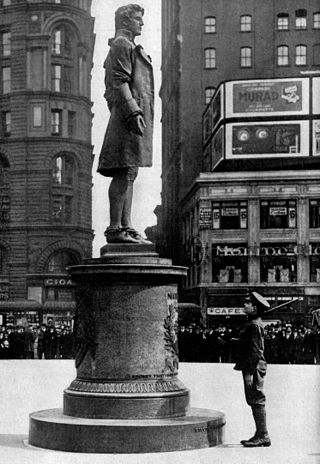
Nathan Hale is a bronze sculpture of Nathan Hale, an American Patriot, soldier and spy for the Continental Army during the American Revolutionary War, unveiled by the Sons of the Revolution in the State of New York during the celebration of Evacuation Day, November 25, 1893. It originally stood at the corner of Broadway and Chambers Street in Manhattan. Currently it is located at the steps of New York City Hall. The image of Nathan Hale gazed at passersby in almost the same location, where on September 22, 1776, he was hanged by Loyalist partisans during the American Revolution. Standing eight feet tall, the sculpture was created by Frederick William MacMonnies, a pupil of August St. Gaudens. It cost approximately $15,000 when completed and mounted.

Captain Nathan Hale is a bronze statue of Nathan Hale (1755-1776), a schoolteacher from Connecticut, who enlisted in the Continental Army during the American Revolutionary War. He was stationed in Boston, but was later transferred to the New York City area. While in New York, Hale acted as a spy against the Kingdom of Great Britain's army. He posed as a teacher and was able to cross enemy lines to obtain military information. He left the area and before he could return home, his cousin, a Loyalist, informed the British about what Hale had done. He was captured and sentenced to death, with the hanging occurring the following day. While Hale was on the gallows, he gave a speech which ended with his famous quote: "I only regret that I have but one life to lose for my country."

The Nathan Hale Schoolhouse is a historic site in East Haddam, Connecticut. In the winter of 1773, Nathan Hale briefly taught in this one-room schoolhouse before leaving East Haddam for another teaching position in New London, Connecticut. The schoolhouse is owned and operated by the Connecticut Society of the Sons of the American Revolution[usurped].
Anna Smith Strong of Setauket, New York was an American Patriot, and she may have been one of the only female members of the Culper Spy Ring during the American Revolution. Her perceived main contribution in the ring was to relay signals to a courier who ran smuggling and military missions for General George Washington. No information has been found concerning Anna's activities after the war other than that she and her husband, Selah Strong, lived quietly in Setauket for the rest of their lives. She died on August 12, 1812.
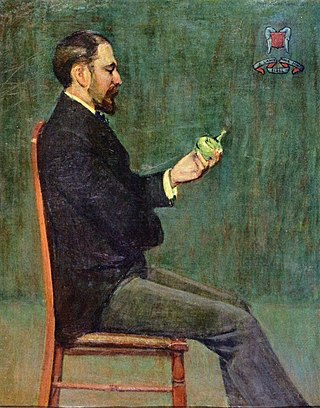
George Dudley Seymour was an American historian, patent attorney, antiquarian, author, and city planner. He was the noted authority and foremost expert on Nathan Hale, the American Revolutionary War hero.
John Palsgrave Wyllys (1754-1790) was a United States Army officer from Connecticut. Wyllys was the son of George Wyllys and Mary Woodbridge, and the youngest brother of Samuel Wyllys. He graduated from Yale College with Nathan Hale.
